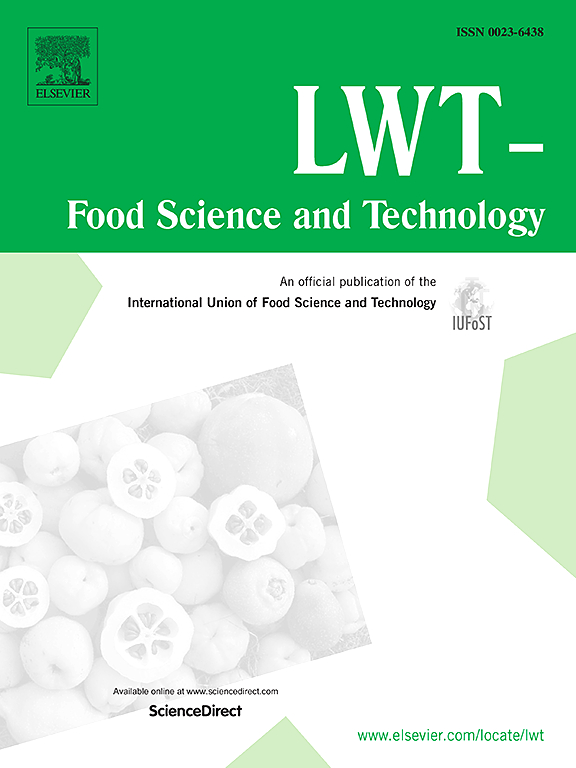Optimization and kinetic study of butyl capryl production by ohmic heating
IF 6
1区 农林科学
Q1 FOOD SCIENCE & TECHNOLOGY
引用次数: 0
Abstract
The objective of the present research was to evaluate the impact of the ohmic heating technique on butyl caprylate production. The impact of butanol to caprylic acid molar ratio, temperature, and catalyst type on the butyl caprylate production was investigated. In addition, the kinetic of butyl caprylate production was investigated. In the ohmic heating technique, a butanol: caprylic acid molar ratio of 1:2 showed the highest conversion. Amberlyst 15 dry exhibited higher conversion than other catalysts. Production of butyl caprylate obeyed the Eley Rideal model. The ohmic heating technique exhibited higher esterification rate constant than the conventional method. Ohmic heating technique reduced the activation energy by 60.51 %, compared to that of conventional process. The CO2 emission and electrical energy consumption in ohmic heating technique was lower than that of conventional method. In conlusion, ohmic heating technique can use as an efficient and cheap technique for butyl caprylate production.
求助全文
约1分钟内获得全文
求助全文
来源期刊

LWT - Food Science and Technology
工程技术-食品科技
CiteScore
11.80
自引率
6.70%
发文量
1724
审稿时长
65 days
期刊介绍:
LWT - Food Science and Technology is an international journal that publishes innovative papers in the fields of food chemistry, biochemistry, microbiology, technology and nutrition. The work described should be innovative either in the approach or in the methods used. The significance of the results either for the science community or for the food industry must also be specified. Contributions written in English are welcomed in the form of review articles, short reviews, research papers, and research notes. Papers featuring animal trials and cell cultures are outside the scope of the journal and will not be considered for publication.
 求助内容:
求助内容: 应助结果提醒方式:
应助结果提醒方式:


